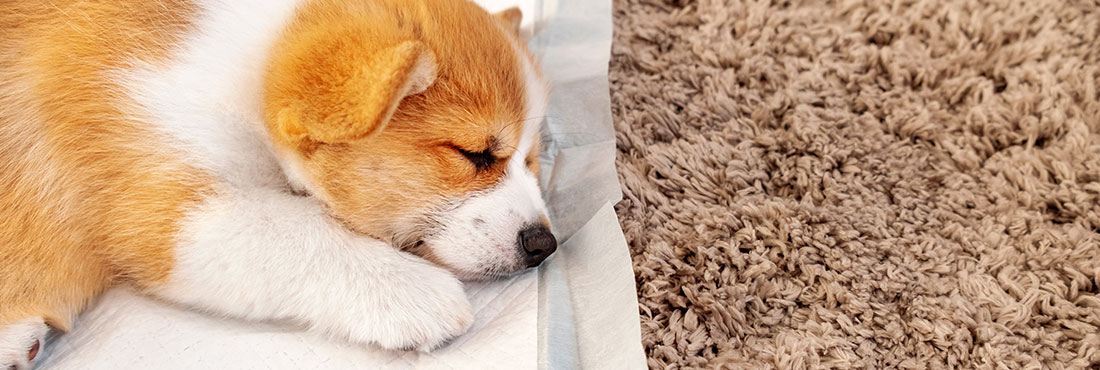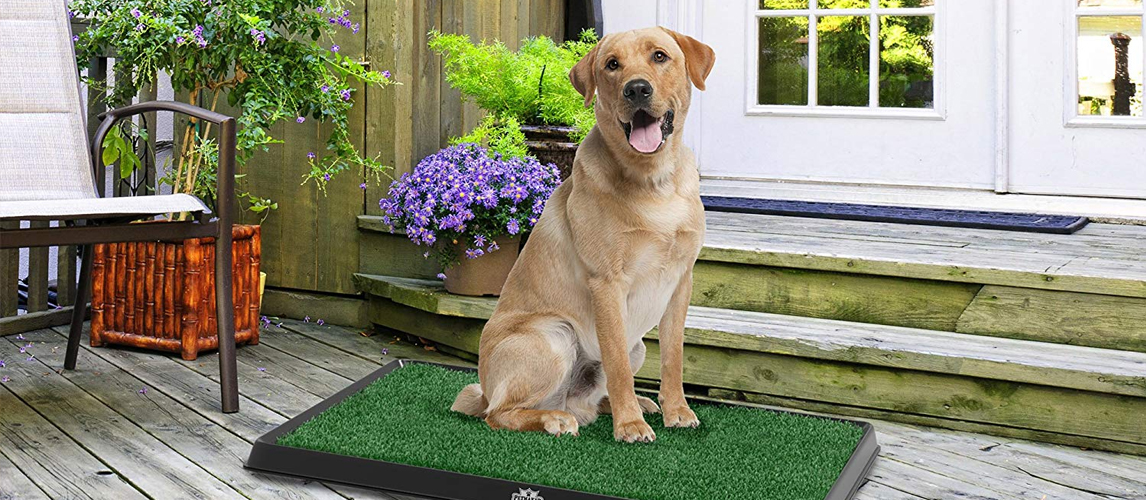We expect a few puddles when we get a young dog; it’s part of the joy of owning a cute pup. It’s not quite so endearing when an adult dog does the same thing! When a dog over six months of age poops or pees in your house, you cannot just accept this as normal behavior. It is a sign that something is wrong and that you need to do something about it.
Housebreaking an adult dog is challenging so here are the secrets to success that you need to know.
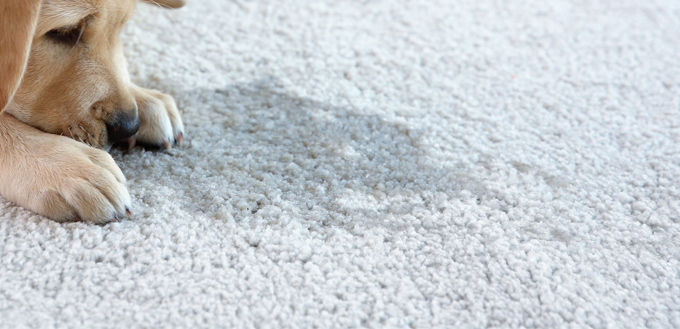
Find Out What is Causing it
There are many different approaches to housebreaking an adult dog. You will not be able to predict which will work best for you if you do not know what is causing the problem. So, diagnosing the issue has got to be the first step and this starts with a trip to the vet.
Your vet will be able to rule out any medical causes for the problem. There are several conditions that can cause an adult dog to poop and pee (the veterinary term for this is elimination) in inappropriate places. Your vet needs to rule them out as the cause. If they are causing the problem, appropriate treatment needs to be started.
- Gastrointestinal problem
This could be anything from an infection to an allergy. It causes your pooch to need to poop urgently and they may not make it outside. You may notice that their poop is very watery too.
- Incontinence issues
Some conditions make it impossible for a dog to control urine. It could be a physical problem such as genital malformations, bladder stones or surgery. It could be a systemic disease such as diabetes or Cushing’s Disease or it could be a problem with the nerves supplying that region of the body.
- Medication
The side effects of some veterinary medication include urinary incontinence and soiling.
- Age
When a dog over nine years old starts to poop or pee in the house it can be caused by age-related conditions including arthritis, loss of cerebral function or loss of bladder control.
They can also help you to identify the behavioral cause of the problem. Here are just some of them.
- House–training issues
If you acquired the dog as an adult, you will not have any knowledge of their previous house training and this may be the origin of the problem. Perhaps they were never house trained or their training was incomplete.
- Surface preference
This can happen when a dog has only used one surface such as newspaper in a crate or a concrete floor in a garage. They form a strong preference for that surface.
- Territory marking
Unfortunately, the natural way for a dog to mark out their territory is to urinate on it! They are more likely to do this if they feel stressed or anxious.
- Anxiety
There are several different types of anxiety that dogs can suffer from. They can get anxious because of a major change in the household such as the arrival of a new family member or animal or even a death in the family. When dogs pee or poop due to anxiety, they often do it on things that smell of the humans or animals in the house such as beds and sofas. Separation anxiety can also cause this problem.
- Dislike of the outside
A dog that doesn’t like going outside is not going to go out there when they need to poop! This can be something as simple as them not liking the cold or wet weather.
- Submissive urination
Dogs who pee when they are excited, greeting a new person or getting told off, may be showing submissive behavior. They may also cringe or cower at the same time.
Read here our article on Indoor Potty for Dogs.
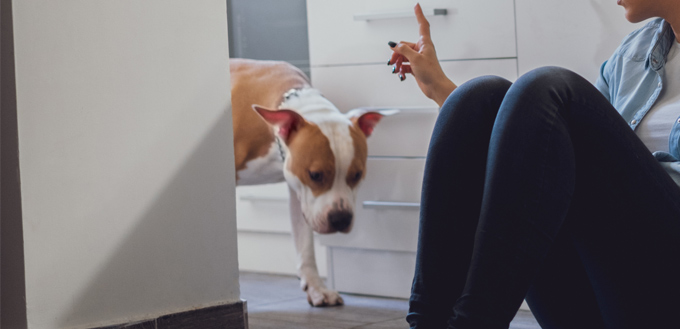
The Secret to Tackling Housebreaking Issues
If your pooch is soiling in the house because they have never been house trained, have incomplete training or have regressed after being successfully house trained, the secret to housebreaking is to get a dog crate. Do this as quickly as you can because the longer you allow the problem to persist, the harder it will be to break.
Dogs don’t like to eliminate in the area that they sleep or eat. Whilst crating should be kept to a minimum, it can play an important role in helping your pooch to learn to hold it in for longer periods. Here are the top tips for how to use the crate to help house break your dog.
- Regular feeding
Keep your dog on a regular feeding schedule and don’t let them eat in between meals. Don’t feed them scraps from the table.
- Regular opportunities to eliminate
You can’t expect your dog to pee and poop outside if you don’t take them there! A fully house-trained adult dog needs to go outside to eliminate at least four times a day so be prepared to offer a lot more than this when training. Make the visits outside at the same time of the day. There should always be one first thing in the morning, last thing at night and before they are left in the crate.
- Learn to spot the signs
Get into the habit of observing your dog closely. Dogs that need to eliminate may scratch or whine at the door but many will not. Instead, you may notice them pacing and whining or circling and sniffing. Many leave the room to go off and have a poop where you can’t see them!
- Use the crate
Your dog will be very reluctant to pee or poop in the crate so use this to your advantage. Confine them in the crate for long periods in the early days. Let them out to take them into the garden to eliminate, then give them 15 to 20 minutes free time around the house before putting them back in the crate. Over the next week or so, you can gradually increase the amount of time they spend out of the crate. Alternatively, you can buy a dog crate and confine them in a small room.
- Give rewards
Whenever your dog poops or pees where you want them to do it (i.e. in your yard or garden), praise them and reward them with a tasty dog treat, a game or a nice walk. Take your dog to the same place in the garden every time because the smell will prompt them to use it as a toilet over and over again. Your pooch may need to run around a bit before they manage to produce anything though!
- Catching them in the act
When you catch your pooch in the act inside the house, give a loud clap to startle them. Shouting will not work, they will just hide away from you to do it. Most dogs will stop what they are doing so that you can lead them straight outside. Once they have done what they need to do outside, give them lots of praise and a reward.
- Dealing with accidents
You may find an unpleasant deposit or a puddle around your house but you just have to ignore it. It is too late for any kind of punishment because dogs cannot think back to what they did wrong. Clean it up with a special enzymatic cleaning solution that is designed for pet urine. This will remove odors that identify the spot as a toilet!
Related Post: Pet Odor Neutralizer
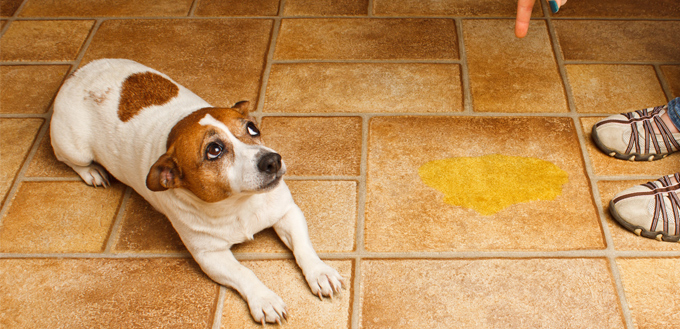
The Secret to Tackling Surface Preference Issues
Most dogs develop a preference for the surface that they like to eliminate on when they are pups of around six to ten weeks of age. It tends to be the surface that they were trained on so if they lived in a house with a grass lawn, that is likely to be their preferred surface. If you then adopt that dog and you do not have a lawn, there can be problems! Also, if your dog grew up in a shelter or a kennel, they may not be too keen on pooping on your lawn.
The crate training method is still effective for this problem but there is one extra secret. To transfer preference from concrete to grass, take a concrete slab and place it on your lawn. Let your dog get used to it. Then, get some grass cuttings and sprinkle them on the concrete where your dog likes to eliminate. Gradually increase the amount of grass on the slab until it is completely covered. Then remove the slab completely.
The Secret to Tackling a Dislike of the Outside
Dogs who have never spent much time outside, because they were raised in an indoor kennel, for example, can feel overwhelmed by the external environment. Also, dogs who have been trained using a paper mat inside, and who are not used to eliminating outside the house, can be anxious about doing so.
Other dogs are successfully house trained but when the weather is bad, they refuse to go outside. This is more common amongst the toy breeds. The salt that is used on city sidewalks in icy conditions also puts many dogs off because it burns their paws.
In addition to the standard crate training, here are some further top tips.
- Get them used to the outside
Before you attempt to get your dog to eliminate outside, work on removing their general anxiety about leaving the house. Drive to a very quiet park and spend some time playing with them there. Build up the time that they spend out in your garden or yard. Make being out in the yard fun by introducing games or even a doggy pal for them to play with. If that dog poops or pees outside, your dog may want to copy them! The odor of another dog’s urine often does the trick.
- Use your balcony
If you live in an apartment, you can get them used to eliminating on grass by putting down some tarpaulin and placing grass sod on it. They will soon get used to the texture.
- Keep them warm and dry
Little dogs will appreciate some protective clothing when they go outside. You can get doggy coats and waterproof clothing that will keep the elements at bay. Don’t forget little dog boots to protect their feet. You can also get protective creams and salves that are specially designed for dogs’ paws.
- Build a shelter
It may be possible to build a shelter that will protect the area of the garden that your dog uses from the worst of the wind and rain. You could build an overhang from your house or use a plastic tarpaulin.
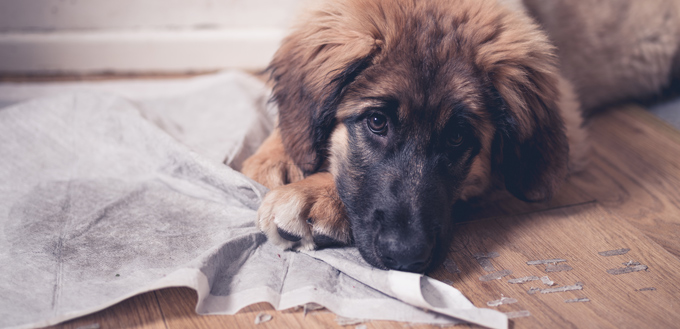
Related Post: Best Dog Pooper Scooper
The Secret to Tackling Anxiety
Anxiety can be a difficult issue to tackle in dogs. The secret is to work with your vet to try to identify the trigger for the anxiety. Then you can start to try to reduce the impact it is having on your pet. As well as the crate training method, here are some additional things that you can try.
- Restrict access
You can use dog gates and pens to cordon off areas of your house so your dog does not have access to the areas where they have previously soiled. This may be enough to break the habit.
- Conflict resolution
If the issue is caused by a new pet, you can start all over again by re-introducing them in the correct way. There is plenty of guidance available on how to do this. Sometimes, animals that previously got on fine can start to have issues with each other. Enlist the help of an animal behavior expert or a vet to tackle this. If a new human is the issue, they can persuade your dog to like them by offering treats, toys and chews and by playing games with your dog.
- Treat substitution
When dogs repeatedly poop or pee on a bed or sofa, it can help if you turn that into a feeding area by scattering treats there. Dogs do not like to soil the area where there is tasty food available!
- Thorough cleaning
The smell of feces and urine attracts dogs back to the same location so always give it a good clean with an enzymatic cleaner that is for pet use.
- Make it unpleasant
Dogs like to be comfortable when they are having a poop or a pee. Make the area that you don’t want them to use as unpleasant as possible. You may need to get creative here! You can try double-sided sticky tape but any rough surface or even booby traps can be successful too.
Related Post: Best Dog Poop Bags
Sources:
- Heather Hoffmann, DVM, How to Potty Train a Puppy or Adult Dog, PetMD
- How to House-Train Your Dog or Puppy, The Humane Society of the United States
- Mikkel Becker, 7 Trainer-Approved Puppy Housebreaking Tips, VetStreet



